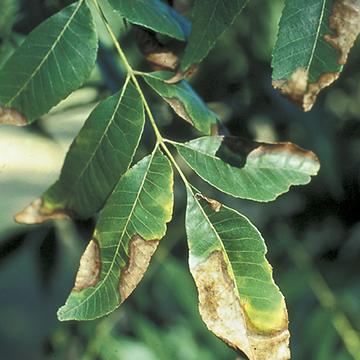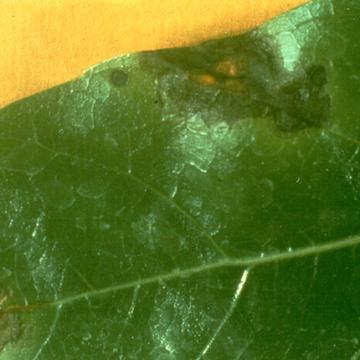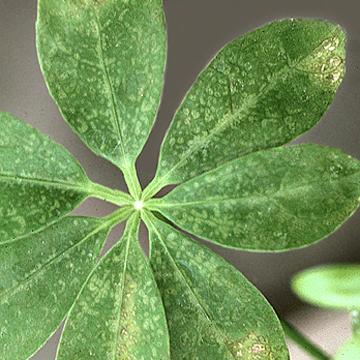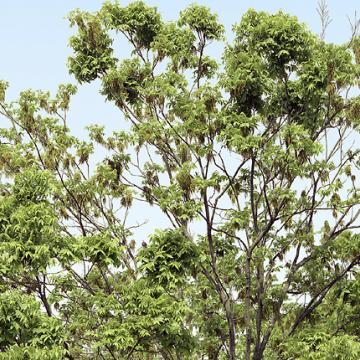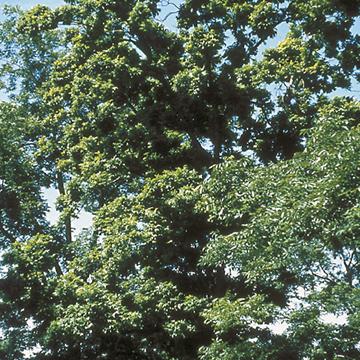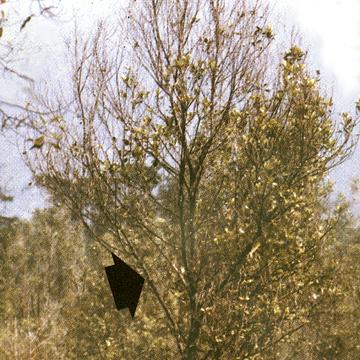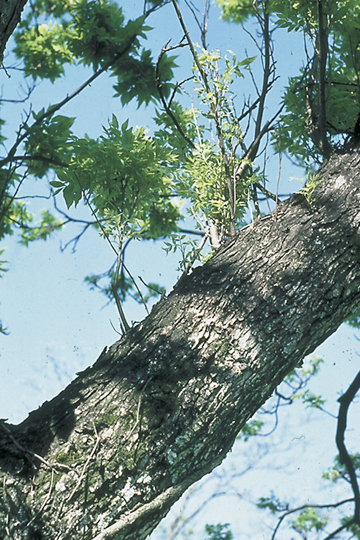DISEASE: Bacterial leaf scorch
HOST: Pecan
Pecan with necrotic scorched leaves with distinct dark lines between healthy and diseased tissues.
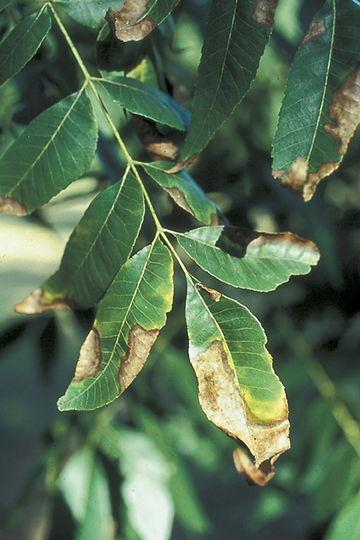
Bacterial leaf scorch | Pecan
DISEASE: Bacterial leaf scorch
HOST: Pecan (Carya illinoinensis)
PATHOGEN: Xylella fastidiosa
SOURCE: T. Brenneman
DISEASE: Bacterial leaf spot
HOST: Schefflera
Leaf with water-soaked lesions.
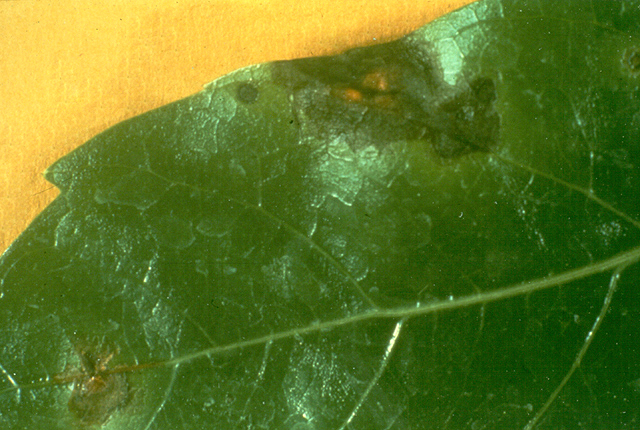
Bacterial leaf spot | Schefflera
DISEASE: Bacterial leaf spot
HOST: Schefflera (Schefflera actinophylla)
PATHOGEN: Xanthomonas hortorum pv. hederae
PATHOGEN SYNONYM: Xanthomonas campestris pv. hederae
SOURCE: M. Gleason
DISEASE: Bacterial leaf spot
HOST: Schefflera
Leaf with large, grayish necrotic areas.

Bacterial leaf spot | Schefflera
DISEASE: Bacterial leaf spot
HOST: Schefflera (Schefflera actinophylla)
PATHOGEN: Xanthomonas hortorum pv. hederae
PATHOGEN SYNONYM: Xanthomonas campestris pv. hederae
SOURCE: A. Chase
DISEASE: Bacterial leaf spot
HOST: Schefflera
Leaf with many small, pinpoint-sized lesions and a few large lesions.
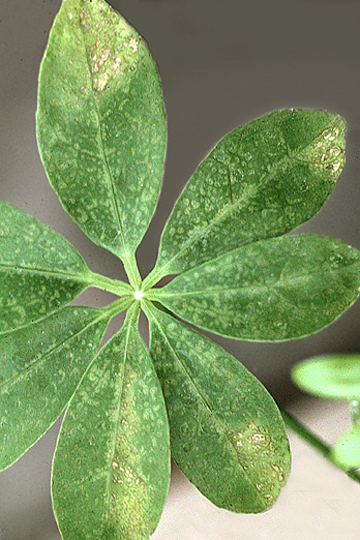
Bacterial leaf spot | Schefflera
DISEASE: Bacterial leaf spot
HOST: Schefflera (Schefflera arboricola)
PATHOGEN: Xanthomonas hortorum pv. hederae
PATHOGEN SYNONYM: Xanthomonas campestris pv. hederae
SOURCE: A. Chase
DISEASE: Bunch disease
HOST: Pecan
Pecan exhibiting bunch symptoms at ends of branches. This disease is thought to be caused by a phytoplasma similar to the walnut bunch pathogen in the X-disease group.

Bunch disease | Pecan
DISEASE: Bunch disease
HOST: Pecan (Carya illinoinensis)
PATHOGEN: 'Candidatus Phytoplasma pruni'
PATHOGEN SYNONYM: Phytoplasma X-disease group
SOURCE: W. Sinclair
DISEASE: Bunch disease
HOST: Pecan
Severe case of bunch disease. Note bunches of foliage.
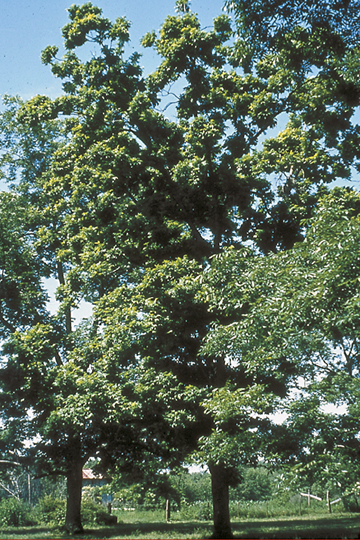
Bunch disease | Pecan
DISEASE: Bunch disease
HOST: Pecan (Carya illinoinensis)
PATHOGEN: 'Candidatus Phytoplasma pruni'
PATHOGEN SYNONYM: Phytoplasma X-disease group
SOURCE: P. Bertrand
DISEASE: Sumatra disease
HOST: Clove
Diseased tree with defoliation and dieback.

Sumatra disease | Clove
DISEASE: Sumatra disease
HOST: Clove (Syzygium aromaticum)
PATHOGEN: Ralstonia syzygii
SOURCE: A. Hayward


